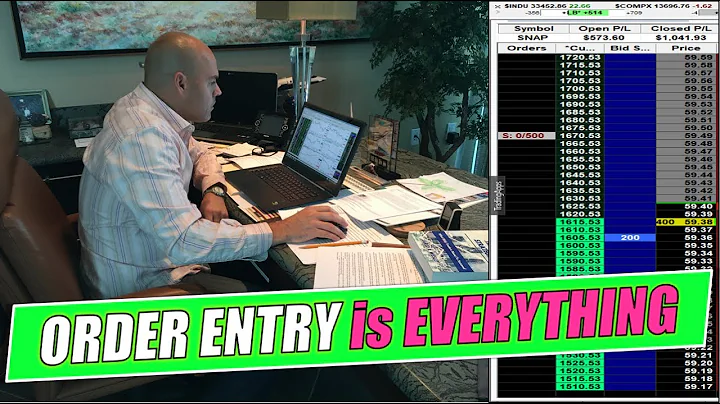Understanding MT202 Swift | How to Read and Use MT 202 for Global Fund Transfers
Table of Contents
- Introduction
- What is MT 202 Swift?
- Understanding the MT 202 Swift Format
- When is MT 202 Swift Used?
- The Difference Between MT 202 and MT 103
- Sample MT 202 Format
- Conclusion
- Frequently Asked Questions (FAQs)
Introduction
Welcome back to Banking Digits! In this article, we will delve into MT 202 Swift Format in detail. We will start by understanding what MT 202 Swift is and its purpose. Then, we will explore the usage, differences from MT 103, and provide you with a sample MT 202 format. So, let's get started!
📌 What is MT 202 Swift?
MT 202 Swift is a payment message used by banks and financial institutions for transferring funds globally. It facilitates interbank fund transfers, where one bank instructs another bank to debit its account with a specific correspondent bank and credit the beneficiary's bank account. However, it's important to note that receiving a MT 202 message does not guarantee immediate funds crediting to the beneficiary's account.
Understanding the MT 202 Swift Format
🔹 Diagram Explanation
To better understand the MT 202 Swift process, let's look at an example. Suppose a beneficiary sends documents under LC to the applicant bank through the beneficiary's bank, seeking payment under LC. The applicant submits a payment request to their bank, known as "A" bank. However, since "A" bank and the beneficiary's bank, "B" bank, don't maintain accounts with each other, a specific process is followed:
- "A" bank debits the applicant's account and credits the funds to its correspondent bank or nostro account.
- Simultaneously, "A" bank sends a message to its correspondent bank, instructing them to further credit the funds to "B" bank.
- "A's" correspondent bank debits the funds parked by "A" bank and credits the funds to "B's" correspondent bank. They then forward the MT202 message to "B" bank.
- Upon noticing the funds in their nostro statement, "B" bank debits their nostro and credits the beneficiary's account.
This process ensures the transmission of funds from one bank to another bank through the MT202 message.
📌 When is MT 202 Swift Used?
MT 202 Swift is generally used for various purposes, including LC bill payments, collection bill payments, buyers credit or suppliers credit payments, and for handling charges claimed by any bank.
📌 The Difference Between MT 202 and MT 103
The basic difference lies in their purpose. In an MT 202 message, the focus is on remitting funds to the beneficiary's bank (B bank). Therefore, the beneficiary's name or account number is not mentioned. Instead, reference numbers provided by B bank in previous communications, such as LC bill or collection bill reference numbers, are used. On the other hand, in an MT 103 message, the account number and name of the beneficiary are mentioned for direct funds crediting.
📌 Sample MT 202 Format
Now, let's take a look at a sample MT 202 format and understand the fields used:
- Date and Time: This indicates the date and time of message transmission.
- Network Delivery Status: It shows the status of network acknowledgment or an issue in message transmission.
- Message Type: This field represents the message type, which is MT202 in this case.
- Sender Bank: This field specifies the sender bank, referred to as "A" bank in our earlier example.
- Receiver Bank: Here, you will find the correspondent bank of the beneficiary.
- MUR and UETR: These are system-generated reference numbers and do not require detailed knowledge.
- Fields 20 and 21: These fields mention the transaction reference numbers of the applicant's bank and the beneficiary's bank, respectively.
- Field 32A: This field indicates the value date of crediting the funds and the amount. The value date may differ from the date of message transmission.
- Field 52A: This field represents the ordering institution, which is the remitter's bank.
- Field 53A: This field denotes the sender's correspondent bank, which, in our example, is "A's" correspondent bank.
- Field 57A: This field displays the account with institution, which is the nostro or correspondent bank of "B" bank.
- Field 58A: Here, the beneficiary institution's details, including the beneficiary bank and account number, are mentioned. Note that the beneficiary maintains an account with their nostro bank, and this number is not the account of the final beneficiary.
- Field 72: The sender bank includes any specific instructions, such as reference numbers or charges breakdown, in the Sender to Receiver Information field. "No Deduct" may indicate that correspondent bank charges cannot be debited from the proceeds.
Conclusion
In this article, we explored the MT 202 Swift Format in depth. We learned about its purpose, usage scenarios, and differences from MT 103. Additionally, we examined a sample MT 202 format and explored its fields and their meanings. It is crucial to understand this format for seamless interbank fund transfers and effective communication between financial institutions.
Thank you for reading this article. If you found it informative, please let us know in the comment box below. Don't forget to subscribe to our channel, Banking Digits, for more educational videos like this in the future.







